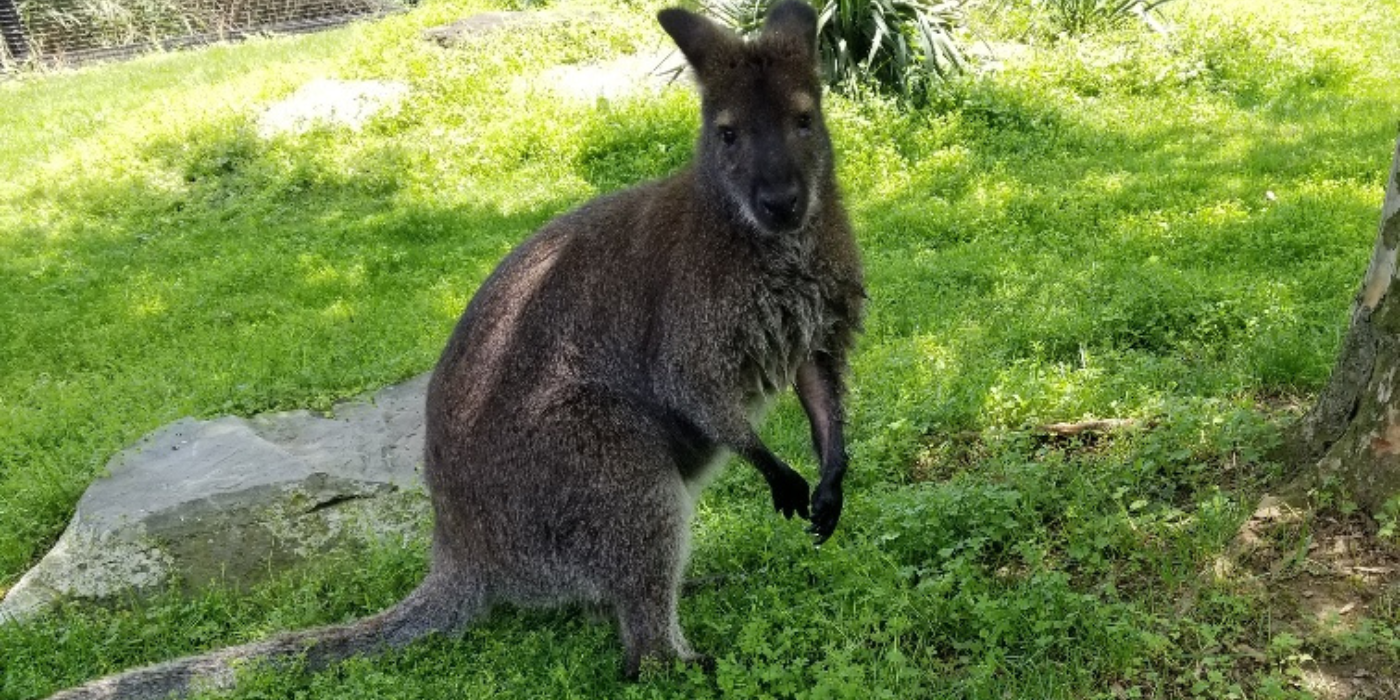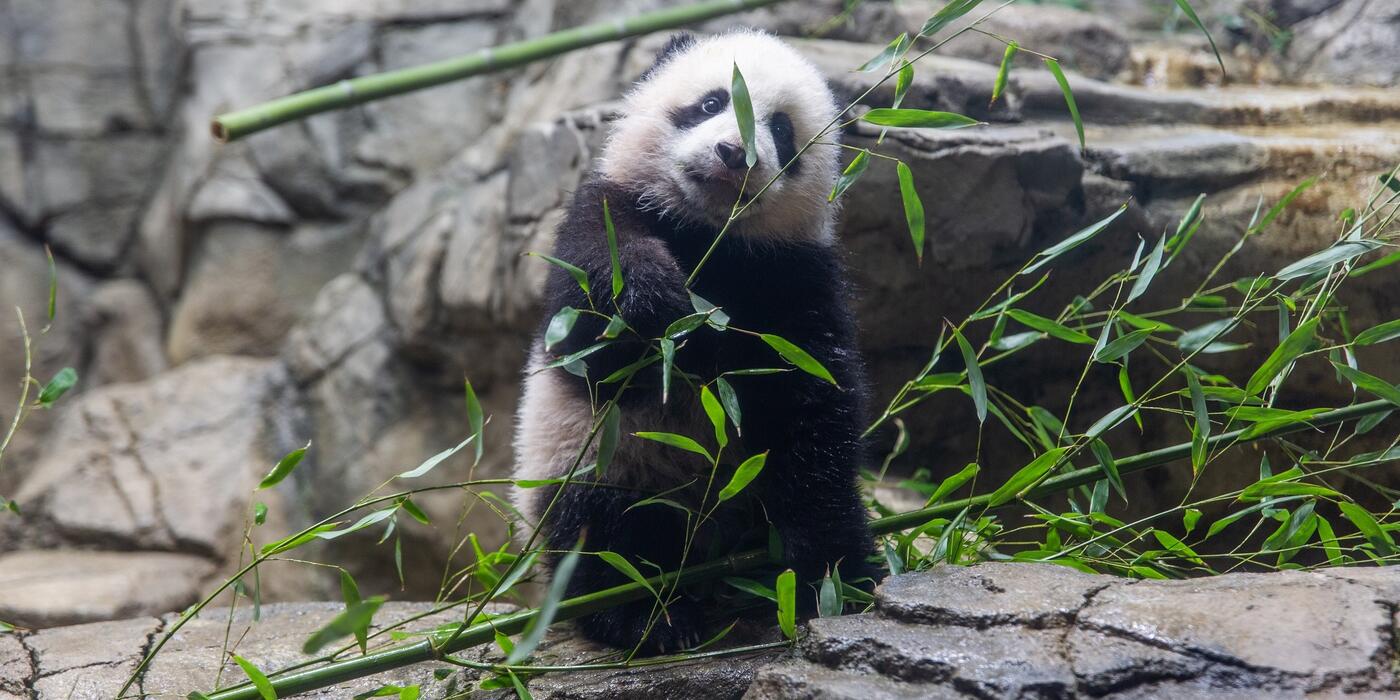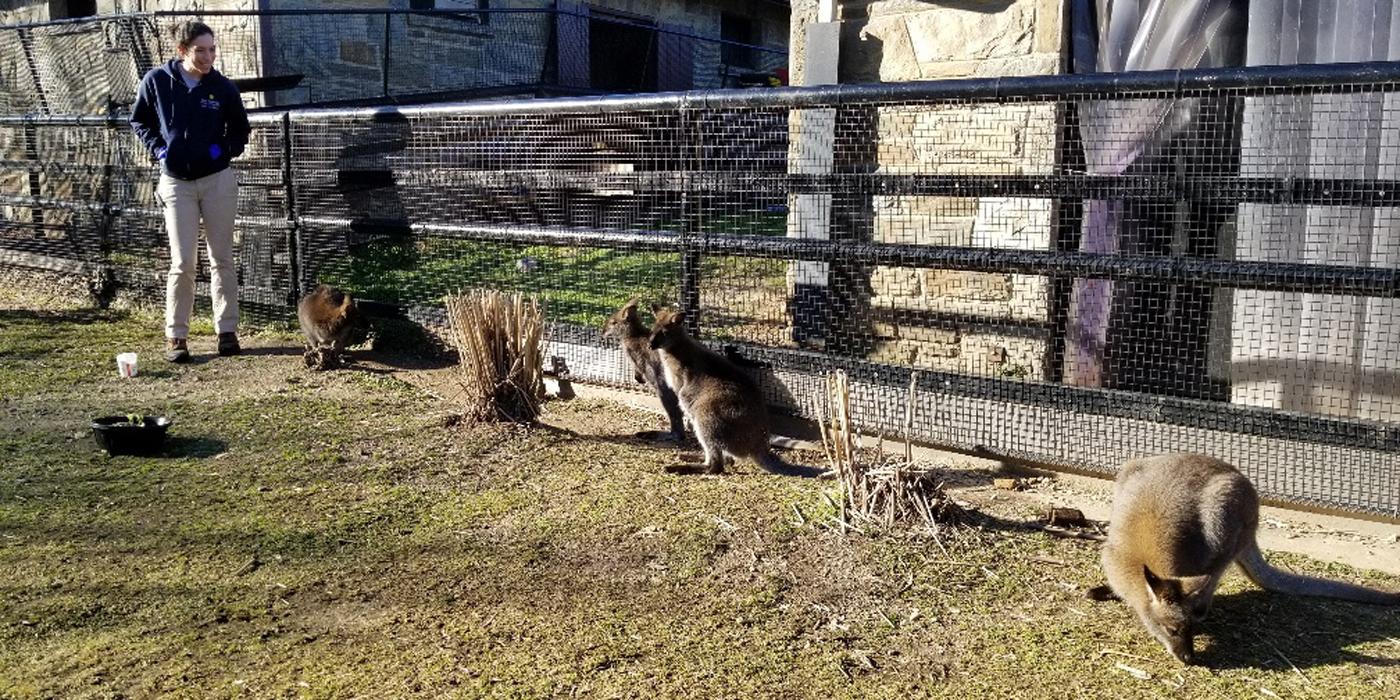New at the Zoo: Meet Winton the Bennett's Wallaby
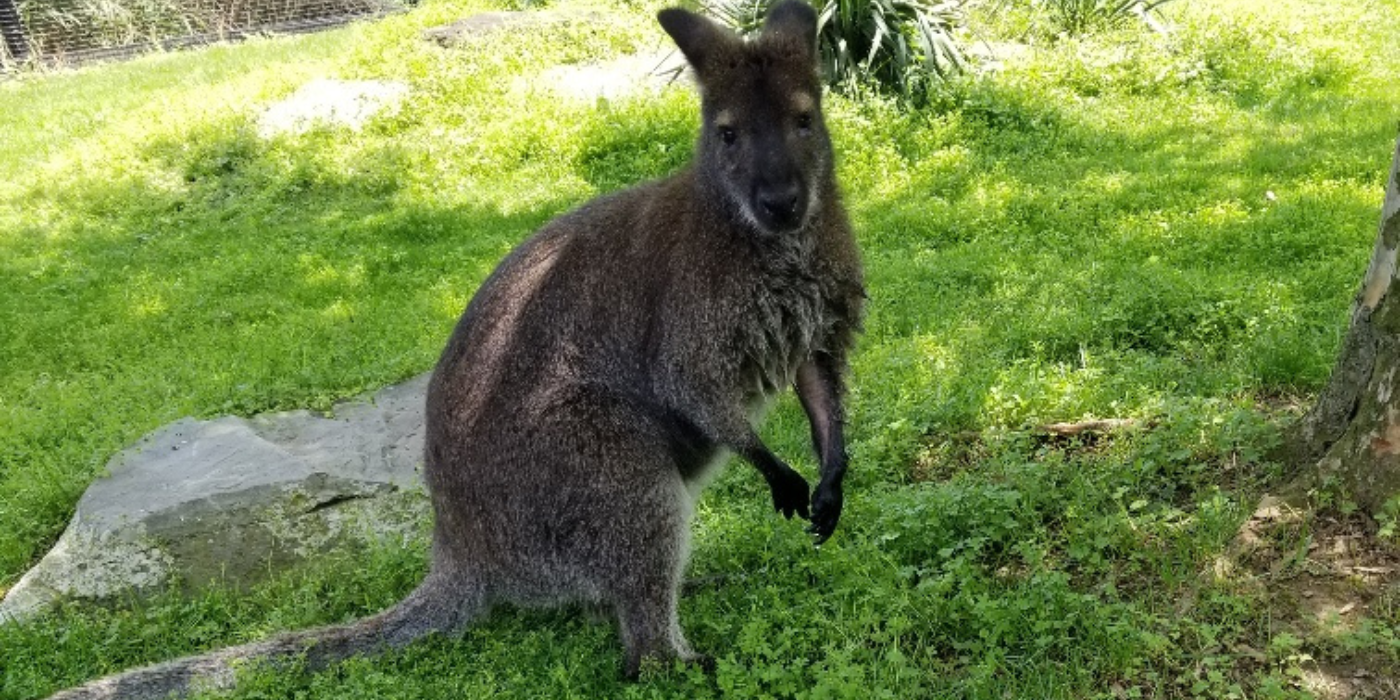
Welcome, Winton!
Our newest member of the wallaby mob at the Smithsonian National Zoo's Small Mammal House has been named! Please join us in welcoming Winton, named after the town of Winton, Australia. Small Mammal House animal keepers Chelia Chong and Esther Wray shared some insight into Winton’s personality, plus their hopes for the future of the mob!
Where is Winton from? How did he come to be at the Smithsonian's National Zoo?
Winton was born at the Idaho Falls Zoo in 2021. Genetically, he is an appropriate match for both of our female wallabies, Victoria and Addie. The Species Survival Plan Coordinator for Bennett’s wallabies recommended Winton be sent to Washington, D.C., to breed. We can’t wait to have joeys again!
What is Winton’s personality like?
We are still getting to know him, but so far, Winton has been curious and a little flighty, but playful with Victoria and Addie. Introducing him to the girls has been going very well! He has shown a lot of interest in Victoria and has slowly been winning her over. This is his first time away from his original mob, or wallaby group, and he is still young, so he is figuring things out as he goes. But he is very respectful and understanding of the girls’ boundaries for the most part.
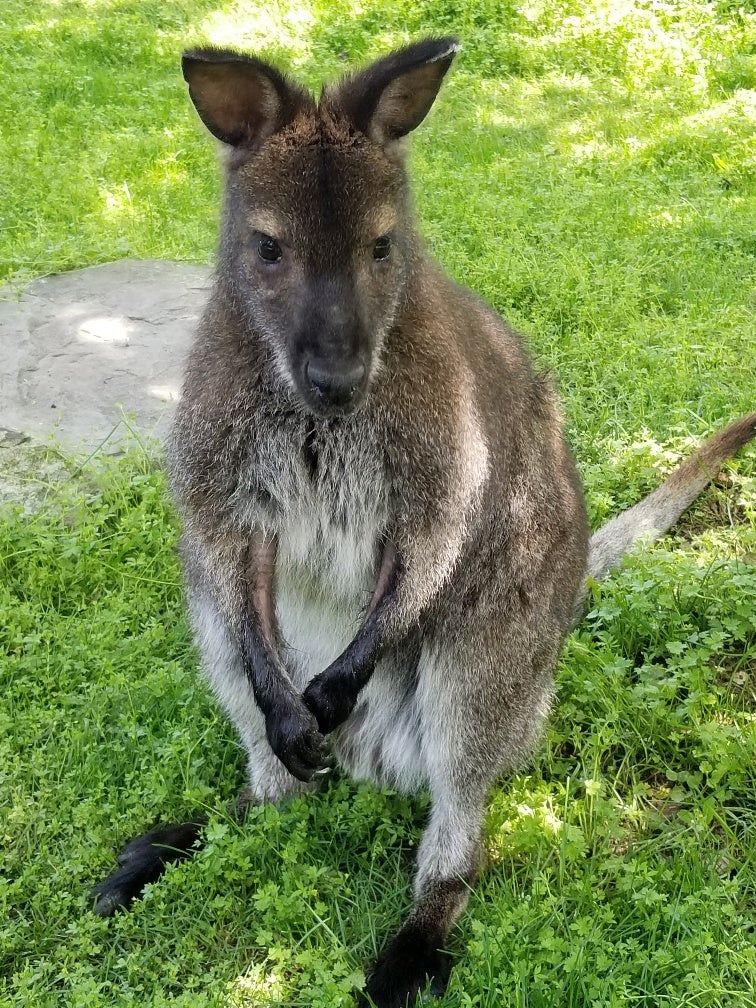
Is a wild wallaby’s diet different from those at the Zoo?
Wallabies are herbivores and eat primarily grasses and leafy plants in the wild. Here at the Zoo, they eat macropod pellets, sweet potato, a variety of lettuces and bamboo or leafy browse. We are still learning Winton’s likes and dislikes, but we were told he likes cooked sweet potato.
What sort of husbandry training behaviors is Winton learning?
We are still working on relationship-building with Winton, which will be helpful during training sessions. However, he is currently learning how to voluntarily get onto a scale for his monthly weighing.
Weighing him for the first time was a great moment. Winton figured out the technique very quickly, simply by watching Victoria get on the scale. When it was his turn, he hopped right on!
How is Winton rewarded for participating in training?
Our wallabies are not food motivated animals and respond best when they are given space to be away from keepers. So that is exactly what we use for reinforcement, space! If the wallabies choose to participate in a training session, once they complete the behavior, we step away or give them access to a part of their exhibit that may have been inaccessible earlier.
Have any tips for visitors hoping to see Winton?
Look for Victoria and Addie, and you will most likely find him a few hops behind them! He enjoys spending time with the girls and seems to be most comfortable when he’s right next to them.
Bennett’s wallabies are considered Least Concern on the IUCN Red List. Why is it important for us to tell their story?
Wallabies are interesting, unique, and cool. Many people aren’t familiar with macropods in general (the family of marsupials that include kangaroos and wallabies). Wallabies are a great gateway species to encourage people’s curiosity! Visitors may assume upon first sight that wallabies are kangaroos (specifically baby kangaroos), and when they realize they aren’t, they usually have questions and want to know more.
Even though wallabies aren’t endangered, they still face some challenges. They do not have many threats in the wild, but are sometimes killed by farmers in Australia, as their diet of grasses and leaves can be competition for cattle and sheep. Even though our visitors might not be from Australia, they can still help wallabies by sharing what they learn at the Zoo with friends and family! The more people know about Bennett’s wallabies, the more we can work to protect them as a species.
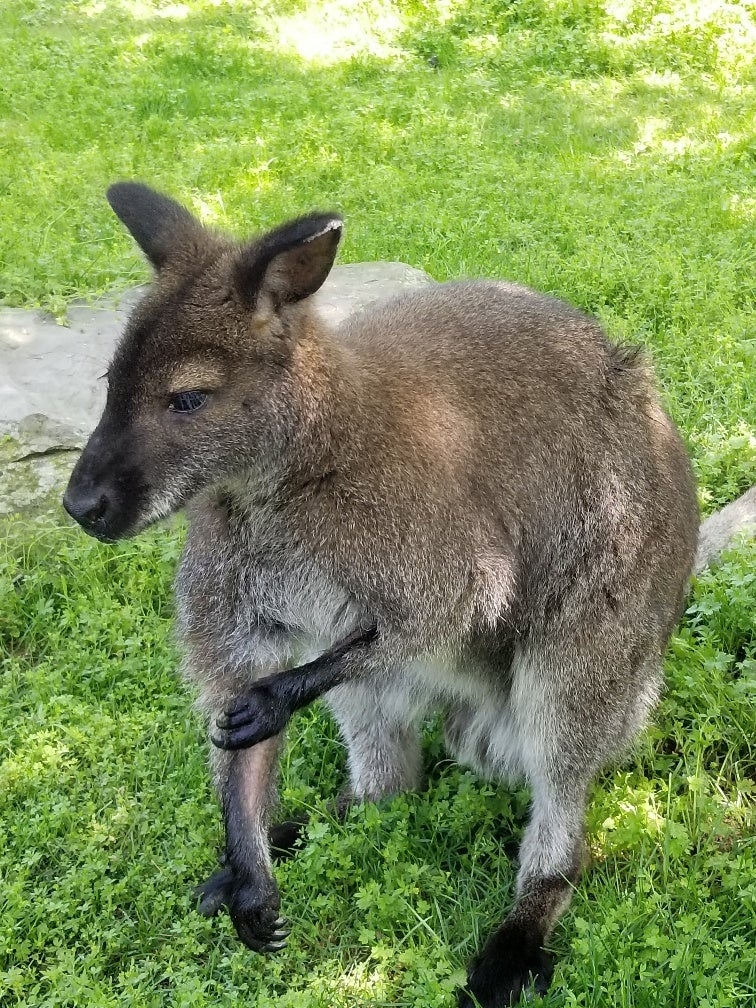
What are some cool facts about wallabies?
They have a reproductive advantage known as embryonic diapause. This is when a partially mature embryo delays implantation if there is currently a joey in the mother’s pouch. Once the joey vacates the pouch, the embryo will resume development. Wallabies don’t store things in their pouches, except for joeys!
Another favorite fact about wallabies is that they have two gaits: hopping to move somewhere quickly and a slower gait known as “pentapedal locomotion.” This is when they use their tail for support, as a fifth limb if you will, as they move. They put their front hands down, put their tail down, and swing their hind legs forward, while their tail bears their weight.
Related Species:

